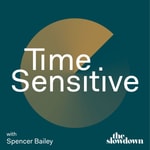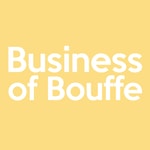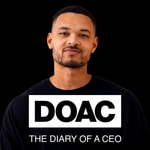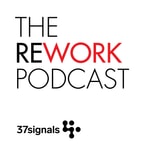Time Sensitive – Details, episodes & analysis
Podcast details
Technical and general information from the podcast's RSS feed.

Time Sensitive
The Slowdown
Frequency: 1 episode/16d. Total Eps: 138

Recent rankings
Latest chart positions across Apple Podcasts and Spotify rankings.
Apple Podcasts
🇬🇧 Great Britain - societyAndCulture
24/03/2025#95🇬🇧 Great Britain - societyAndCulture
23/03/2025#94
Spotify
No recent rankings available
Shared links between episodes and podcasts
Links found in episode descriptions and other podcasts that share them.
See all- https://lifestraw.com/
779 shares
- https://merlin.allaboutbirds.org/
207 shares
- https://www.plannedparenthood.org/
91 shares
RSS feed quality and score
Technical evaluation of the podcast's RSS feed quality and structure.
See allScore global : 83%
Publication history
Monthly episode publishing history over the past years.
Molly Jong-Fast on the Fleeting Nature of Fame
Season 11 · Episode 134
mercredi 18 juin 2025 • Duration 01:00:38
Through her sharp and biting political commentary—whether as host of the podcast Fast Politics, as a special correspondent for Vanity Fair, or as a political analyst on MSNBC—Molly Jong-Fast has, over the past decade, become something of a household name. But, as the daughter of the once-famous author and second-wave feminist Erica Jong—whose 1973 novel Fear of Flying catapulted her into the literary limelight—she has actually been in the public eye for much longer, decades before this more recent notoriety of her own making. Jong-Fast’s latest book, the searing, heartbreaking (but also, at times, hilarious) memoir How to Lose Your Mother, is in some sense an effort to take her story back after being in the shadow of her narcissistic, too often out-of-reach mother for so long. It’s also a book about aging and frailty, and an extremely difficult, gut-wrenching year: In 2023, Erica was diagnosed with dementia, right around the same time that Molly’s husband learned he had a rare cancer.
On the episode, Jong-Fast talks about her own actual fear of flying, in addition to her mother’s book of the same name; 27 years of sobriety and how her time in A.A. has transformed her life; and the importance of confronting the vicissitudes of aging and one’s passage through time.
Special thanks to our Season 11 presenting sponsor, Van Cleef & Arpels.
Show notes:
[4:28] “Fear of Flying” (1973)
[4:28] Erica Jong
[4:49] “How to Lose Your Mother: A Daughter’s Memoir”
[7:53] “Spartacus” (1951)
[7:53] “April Morning” (1961)
[7:53] “The Immigrants” (1977)
[9:15] Lee Krasner
[10:04] Susan Faludi
[10:04] “Backlash” (1991)
[12:09] “Fear and Flying Erica & Erotica in Connecticut” (1980)
[12:09] “Fanny” (1980)
[14:57] Marty Seif
[18:26] Special Guest: Erica Jong (2023)
[19:39] Pan Am Flight 001
[21:11] “The Year of Magical Thinking” (2005)
[21:11] “Notes to John” (2025)
[26:54] “The Sex Doctors in the Basement” (2005)
[36:46] “Normal Girl” (2000)
[38:52] Jacob Bernstein
[38:52] Carl Bernstein
[38:52] Stalin Peace Prize
[46:05] Michael Tomasky
[48:55] Hazelden
[49:57] “How Molly Jong-Fast Tweeted Her Way to Liberal Media Stardom”
Alicja Kwade on the Absurdity of Being Alive
Season 11 · Episode 133
mercredi 4 juin 2025 • Duration 01:19:31
Few artists aim to make sense of the subjectivity and complexity of time and space quite like the Polish-born, Berlin-based artist Alicja Kwade. In each of her works, ranging from sculptures and large-scale public installations to films, photographs, and works on paper, Kwade displays an astute sense of temporality and the ticking hands of the clock. Her practice, in a literal and figurative sense, is a quest to understand time as a ruler and shaper of our lives and of our world. For her latest exhibition, “Telos Tales,” on view at Pace Gallery in New York’s Chelsea neighborhood through August 15, Kwade has created three monumental steel-frame sculptures with treelike limbs alongside new mixed-media works in an effort to engage the intangible nature of time. As with all her work, “Telos Tales” is philosophical, illusionistic, and inspires wonder: Long after a viewer has seen it, it will leave them questioning.
On the episode, Kwade considers the unfathomability of all things, finds humor in being human, and explains what a relief it is to know that some questions have no clear answers—and never will.
Special thanks to our Season 11 presenting sponsor, Van Cleef & Arpels.
Show notes:
[13:19] “Alicja Kwade: Telos Tales” at Pace Gallery
[16:56] “Hiroshi Sugimoto on Photography as a Form of Timekeeping”
[18:41] “Alicja Kwade: Pretopia” (2025)
[24:42] On Kawara’s Date Paintings
[25:04] “Alicja Kwade & Agnes Martin: Rhythm, Equilibrium, and Time” (2024)
[25:04] “Gegen den Lauf” (2012-2014)
[29:48] “Stellar Day” (2013)
[31:44] “Against the Run” (2015)
[31:44] “Against the Run” (2019)
[31:44] Pinacoteca Agnelli Art Center
[35:04] “88 Seconds” (2017)
[35:04] Eadweard Muybridge
[39:24] Hiroshi Sugimoto
[49:00] Salvador Dalí
[49:00] Harry Houdini
[49:00] Kazimir Malevich
[59:27] “iPhone” (2017)
[59:27] “Computer (PowerMac)” (2017)
[01:04:47] “LinienLand” (2018)
[01:04:47] “Alicja Kwade: Parapivot” (2019)
[01:04:47] “Alicja Kwade: Viva Arte Viva” (2017)
[01:08:30] “L’ordre des Mondes (Totem)” (2024)
[01:13:50] Jason Farago
[01:13:50] “Celestial Visions on the Met Roof”
Richard Christiansen on Bridging Horticulture and Popular Culture
Season 10 · Episode 124
mercredi 11 décembre 2024 • Duration 01:01:46
Richard Christiansen believes that the true definition of luxury is having one’s senses on full blast—seeing, tasting, smelling, hearing, and touching the world around by engaging in its beauty and bounty to the fullest. This idea is at the heart of his company, the garden-pleasure apothecary Flamingo Estate, which is both a place—a home and garden on a seven-acre property in the hills of Los Angeles—and a brand, which operates a global farming collective and sells wellness, beauty, and “home essentials” products. In just a few years, Flamingo Estate has collaborated with cultural figures such as Julianne Moore, Martha Stewart, and Ai Weiwei, and created some 200 or so products, from C.S.A.-style farm boxes and flower arrangements, to scented candles and a rosé wine, to body washes and chocolates. Capturing the spirit of all this is a new book, Flamingo Estate: The Guide to Becoming Alive, which tells the story of his company’s rapid rise and includes interviews with the likes of Jane Fonda, John Legend, and Alice Waters.
On the episode, Christiansen talks about his lifelong connection with beekeeping and honey; why more brands should embrace “radical inconsistency” in their products; and how reading a book by Jane Goodall, and later befriending the anthropologist and conservationist, changed the course of his life.
Special thanks to our Season 10 presenting sponsor, L’École, School of Jewelry Arts.
Show notes:
[4:24] Flamingo Estate
[8:05] Flamingo Estate: The Guide to Becoming Alive
[46:21] Jane Goodall
[12:48] Alice Waters
[15:06] Harvey
[35:35] Chandelier Creative
[45:51] Benetton
[45:51] Colors
[50:35] Rumiko Murata
[52:35] Owl Bureau
[58:28] “The Summer Day”
Ibrahim Mahama on the Great Potential of Art to Change How We Look at the World
Season 3 · Episode 36
mercredi 1 avril 2020 • Duration 01:11:17
Over the past decade—and especially in the last year—the Ghanaian artist Ibrahim Mahama has swiftly risen to become one of the most prominent African voices in art. At age 32, he has already exhibited at the Biennale of Sydney, on Cockatoo Island (his work “No Friend But the Mountains” is currently on view there through June 8, though that date may change because of the coronavirus pandemic), as well as at the 2019 Frieze Sculpture presentation at Rockefeller Center in New York and the Ghana Pavilion at the 2019 Venice Biennale. He’s created large-scale public installations around the world, including in Milan (with the Trussardi Foundation, also in 2019) and Athens (during Documenta 14, in 2017). Mahama’s work has also been shown at the Whitworth Gallery in Manchester (also in 2019), the Norval Foundation in Cape Town (yet again in 2019), and the Eli and Edythe Broad Art Museum at Michigan State University (2015). He is represented by the highly respected White Cube gallery. The Africa Report, a Paris-based news magazine that focuses on African politics and economics, recently named Mahama one of the 100 most influential Africans today. In addition to his art-making, he is the founder of an artist-run nonprofit cultural institution and exhibition space, the Savannah Center for Contemporary Art (SCCA), which opened a year ago (yes, also in 2019) in Tamale, a city in the north of Ghana.
Central to Mahama’s inspiration is a specific material: jute sacks. Working with a team of collaborators to repurpose the burlap bags, which are traditionally used to transport cocoa beans, he sews together installations that range from wall- or room-size to monumental, often draping the fabric on, around, and over prominent architectural sites. Though his pieces have often been compared to the “wrap” work of Christo and Jeanne-Claude, that is not necessarily an apt analogy, or at least it’s just a surface-level one. While similar in scale and scope to Christo’s ambitious environmental artworks, Mahama’s creations, like his overall practice, are socially oriented and focused on concerns such as labor, migration, globalization, and economic exchange.
On this episode of Time Sensitive, Mahama discusses with Spencer his fascination with jute sacks as a material; his views on “Ghanaian time” and Africa’s global influence; his unorthodox upbringing (he grew up among nine siblings and with a polygamous father who had four wives, and was sent to boarding at age 5); and his dreams for the SCCA.
Julia Watson on the Power of Indigenous Technologies to Transform Our Planet
Season 3 · Episode 35
mercredi 25 mars 2020 • Duration 01:04:14
Julia Watson is really into TEK. Not necessarily the Silicon Valley variety of tech, but rather traditional ecological knowledge. An anthropologist, environmentalist, activist, and landscape designer, Watson has become a leading researcher of indigenous communities, closely studying the vast implications of their centuries-old (in certain cases, millennia-old) innovations. In the face of today’s climate crisis, Watson’s new book, Lo-TEK: Design by Radical Indigenism (Taschen), a culmination of years of research in 18 countries around the globe, is poised to become something of a bible for a growing design movement that’s focused on harnessing nature-based technologies and better understanding how we can all live in closer harmony with the earth.
Born in Australia, Watson studied landscape architecture at Harvard’s Graduate School of Design, where she focused on eco-technologies and preservation of sacred spaces. Currently, she teaches urban design at Columbia University’s Graduate School of Planning and Preservation, as well as at Harvard, and runs her own design studio that’s oriented toward the practice of “rewilding.”
On this episode of Time Sensitive, Watson speaks with Andrew about her deep research into various indigenous communities, the symbiotic relationship between culture and nature, her perspective on the recent Australian bushfires, and more.
Dustin Yellin on His Quest to Reimagine Learning in the 21st Century
Season 3 · Episode 34
mercredi 18 mars 2020 • Duration 52:50
Since establishing the Pioneer Works nonprofit cultural center in Brooklyn’s Red Hook neighborhood in 2013, artist Dustin Yellin has slowly grown the place into a powerhouse hub at the nexus of art, technology, music, and science (with literature and food sprinkled in). Like the beautifully complex glass sculptures he creates, Pioneer Works is a richly layered mishmash. Consider this spring’s lineup of programs: One night this April, there’s a performance by the Ghanaian electronic and rap artist Ata Kak; another night, there’s a “Supper Club” dinner featuring traditional Japanese home cooking by chef Emily Yuen and owner Maiko Kyogoku of the New York City restaurant Bessou; on May 2, there’s the institution's annual benefit, this year co-chaired by Austin and Gabriela Hearst, and honoring poet, essayist, playwright Claudia Rankine, as well as economist Marilyn Simons and her billionaire hedge-fund manager husband, James. Currently on display in the galleries is a performance set by artist Jaimie Warren (through April 12) and a showing of four Japanese avant-garde films from the 1960s and ’70s (through April 19). This is to say nothing of the classes, roundtables, and residencies Pioneer Works offers, or its book-publishing arm.
Pioneer Works’s eclectic, wide-ranging buffet of intellectual offerings is pure Yellin. With boundless energy, enigmatic bravado, and a collaborative spirit, he has built a multifaceted community not unlike what Andy Warhol had at The Factory from the ’60s to ’80s—only it’s somewhat more institutional and professionalized, and with a new executive director, Eric Shiner (formerly of White Cube gallery, Sotheby’s, and the Andy Warhol Museum), at the helm. As Yellin points out on this episode of Time Sensitive, maintaining a certain scale and intimacy at Pioneer Works is essential to him, with future growth potentially coming from building satellite locations in other cities. As he sees it, the institution could become the next Stanford, Harvard, or MIT Media Lab—a new outlet for education, an incubator that brings together the best and brightest minds on earth in a fresh way, a place to foster the shapers of the future.
On the episode, Andrew speaks with Yellin about everything from his wide-ranging dreams for Pioneer Works; to his ambitious plans for “The Bridge,” a large-scale monument to the end of oil; to his harrowing memories of Hurricane Sandy.
Nathan Myhrvold on the Art and Science of Food
Season 3 · Episode 33
mercredi 11 mars 2020 • Duration 01:16:38
Nathan Myhrvold is no ordinary chef. With two master’s degrees (one in mathematical economics, the other in geophysics and space physics) and a Ph.D. in theoretical and mathematical physics, he is also a technologist who did postdoctoral research with Stephen Hawking. From 1986 to 1999, Myhrvold was the chief strategist and chief technology officer at Microsoft, where he worked closely with Bill Gates on future planning and developing the company’s software. (During this time, he also co-authored Gates’s 1995 best-seller, The Road Ahead; in 1999, at age 40, he retired from the company.) Now, as the CEO of the firm Intellectual Ventures, which he co-founded in 2000, he develops and licenses intellectual property. The company owns upwards of 30,000 assets, nearly 900 of which were invented by Myrhvold himself. So where does cooking come in? Long a gastronomer and foodie (before the latter term was even a thing), Myhrvold began to pursue his passion for cuisine early on. During his Microsoft years (with Gates’s blessing), he took time off to attend the La Varenne cooking school in Burgundy, and later even apprenticed part-time at Rover's restaurant in Seattle. For a time, he was the “chief gastronomic officer” of the Zagat Survey.
It wasn’t until about a decade ago, though, that things really took off for Myhrvold on the food front. In 2011, he established a full-fledged publishing platform with the release of his six-volume Modernist Cuisine, an encyclopedic whirlwind into the science of contemporary cooking. A behemoth of a book, at 2,438 pages, it took about three years to produce, with several dozen people involved. Subsequent iterations have followed: Modernist Cuisine at Home (2012), The Photography of Modernist Cuisine (2013), and Modernist Bread (2017). A Modernist Pizza book is currently in the works. The series has become a cult favorite, highly respected by many of the world’s top chefs, including Thomas Keller and Heston Blumenthal. Especially remarkable about the project—aside from the inventive recipes—is the hyperrealist, meticulously executed photography. Many of the pictures are made through a “cutaway” technique involving machinery to that slices pots, pans, and ovens in half to offer a literal inside look into the processes behind the dishes—a pork roast atop embers, say, or broccoli steaming in a pot. It is through these images that Myhrvold's many talents and interests in science, food, and art collide, and to potent effect.
On this episode of Time Sensitive, Spencer speaks with Myhrvold about his journey into sous vide cooking, the problems he sees with the Slow Food movement, why food photography has never been considered a high art, and more.
Gabriela Hearst on Why Making Things That Stand the Test of Time Matters
Season 3 · Episode 32
mercredi 4 mars 2020 • Duration 54:43
Since launching her eponymous label in 2015, the Uruguayan-born, New York–based designer Gabriela Hearst has become known for her sincere, forward-thinking approach to sustainability; her slow-growth business ethos; the long waiting lists for her limited-production handbags; her impeccable tailoring; and her high-quality collections that, season after season, have consistently been hailed as critics’ favorites. For her, sustainability isn’t just a buzzword or an item to tick off a list; it’s something essential and, most importantly, actionable.
Last year, Hearst presented the industry’s first-ever carbon-neutral runway show. A collaboration with Bureau Betak and EcoAct, the presentation was done completely sans blow dryers, straighteners, or curling irons, models were sourced locally, and a carbon-offset fund for the energy-related production costs was donated to the Hifadhi-Livelihoods Project in Kenya. Hearst regularly uses deadstock in her collections. She recently made all of the brand’s packaging biodegradable and compostable, and also tweaked her supply chain to ship by boat instead of by air freight. Hearst’s new eco-conscious store in London’s Mayfair neighborhood, designed by Norman Foster, includes custom furniture made from a tree that fell in a storm and herringbone oak flooring reclaimed from a military barracks. Her preferred word for sustainability? Accountability.
Raised on a ranch that has been in her family for six generations—which her father bequeathed to her in 2011 when he passed away—Hearst, early in her life, became interested in where things come from and how they’re made, and in understanding the true value of utility, namely that making well-constructed things that stand the test of time matters. Now, in the age of climate change, her less-but-better mindset has become all the more relevant and pressing. Creating timeless, long-lasting clothing, she says, is the only reasonable (and yes, sustainable) way forward. Eschewing a trend-driven outlook in favor of one that’s about creating fewer, better items that her customers will keep forever, Hearst continues to be informed by her upbringing on the farm. It’s an approach that appears to be working: The company had a turnover of between $15 and $20 million in sales revenue in 2018, and last year LVMH Luxury Ventures bought a minority stake in it (the majority is owned by Hearst and her husband and business partner, John Augustine “Austin” Hearst, a TV and film producer and media executive who is the grandson of William Randolph Hearst).
On this episode of Time Sensitive, Hearst speaks with Spencer about everything from her youth on a ranch in rural Uruguay, to her personal definitions of sustainability and luxury, to her roundabout path to becoming a fashion designer, to her mother’s Zen Buddhist teachings.
Tony Fadell on Leaving Silicon Valley to Help Build a Healthier Society, Online and Off
Season 2 · Episode 31
mercredi 18 décembre 2019 • Duration 01:04:30
In both his work and his life, Tony Fadell constantly imagines Version 2.0 (if not 3.0, or 4.0 and beyond). On a mission to shape the future through forward-thinking design, engineering, invention, and investing, he is probably most widely recognized for both founding the smart-home products company Nest and for his instrumental involvement in developing the iPod. Through his newest venture, the appropriately coined advisory firm Future Shape, Fadell lends his expertise to promising entrepreneurs and companies, funding and advising a range of environmentally minded startups, such as the biologically produced leather-maker Modern Meadow, semiconductor company Phononic, and micro-LED developer Rohinni.
After starting his career at General Magic, an early spin-off of Apple, Fadell moved to the electronics behemoth Philips and then, eventually, to Apple, where he started in 2001 and was, from 2006 to 2008, on the executive team that created the iPhone. In 2010, he founded Nest, which Google acquired less than three years later for $3.2 billion. Having played a crucial role in helping many of the most important technological Silicon Valley innovations of the 2000s come to fruition, Fadell has since decamped for Paris, where he now runs Future Shape. Recently, he spent an entire year in Bali with his family.
Rebooting and welcoming change has been a constant thread throughout Fadell’s career, and also in his personal life. While he’s known for his extreme work ethic—early in his career, he famously had a bed in his office—Fadell recognizes the need to take time off in order to explore, and to create space for inner growth outside of the workplace. On this episode, Fadell and Andrew Zuckerman discuss his youth in Detroit; the perils of screen addiction; the external pressures of a career-oriented culture; and paving the way for a healthier society, online and off.
Suketu Mehta on the Positively Profound Impact of Immigration on the Planet
Season 2 · Episode 30
mercredi 11 décembre 2019 • Duration 01:06:20
Suketu Mehta tells a story about pinkie fingers, dancing and kissing. It is as confounding as it sounds. And utterly heartbreaking, too. In his assertive and essential new book, This Land Is Our Land: An Immigrant’s Manifesto—as well as on this episode of Time Sensitive—he describes the scene: Friendship Park, a half-acre fence on the U.S.-Mexican border. A Mexican man living in the U.S., who hasn’t seen his mother in 17 years, and has been working hard to send money back to her all that time, at last reunites with her at that fateful fence. But because of its thick and rigid design, he can’t see her clearly. Through the holes in the fence, mother and son can only fit stick their pinkies, wagging them back and forth, gently touching, caressing, connecting—but only for a few moments. This small act serves as a greater metaphor about immigration, one with vast implications and consequences, and not just in America but around our world today.
Mehta, a Calcutta-born, New York–based journalist and N.Y.U. professor who was a Pulitzer Prize finalist for his 2005 novel Maximum City: Bombay Lost and Found, is full of stories like this one. (The dancing, kissing pinkies, however, may be among his most gut-wrenching and tear-inducing tales.) As a reporter and writer, Mehta is slow and methodical in his approach, and it shows in his rich and varied body of work, which spans decades and is written with the elegance and grace of a poet. A sort of modern-day Walt Whitman, he has the rare ability to home in on deeply personal human stories and craft narratives around them that reveal larger truths about culture, politics, and society.
On this episode, Mehta speaks with Spencer Bailey about his challenging high school years as an Indian immigrant growing up in Queens, his belief in how the future of democracy “rests on storytelling,” and the importance of considering historical time frames when thinking about today’s contentious immigration debates.









